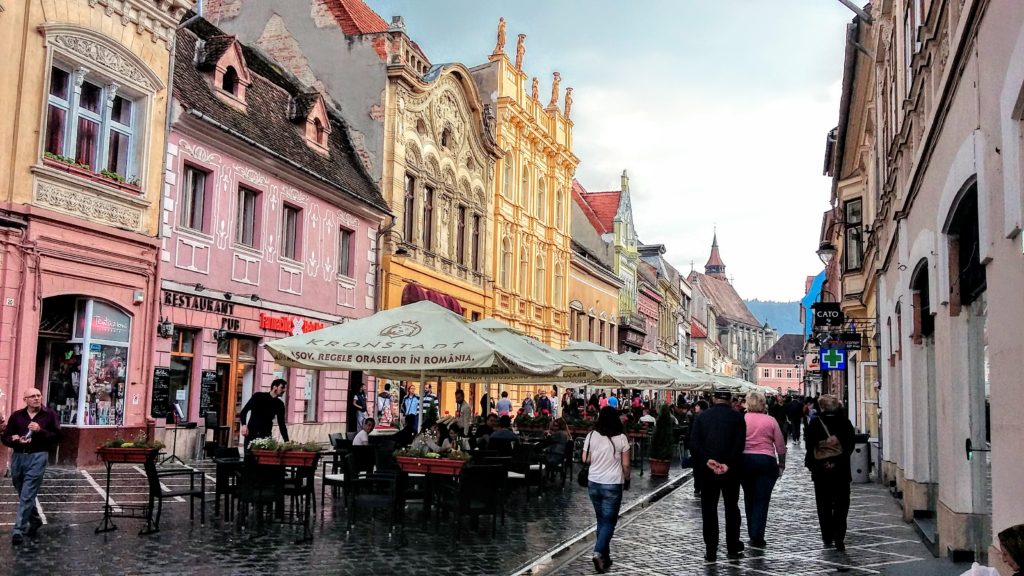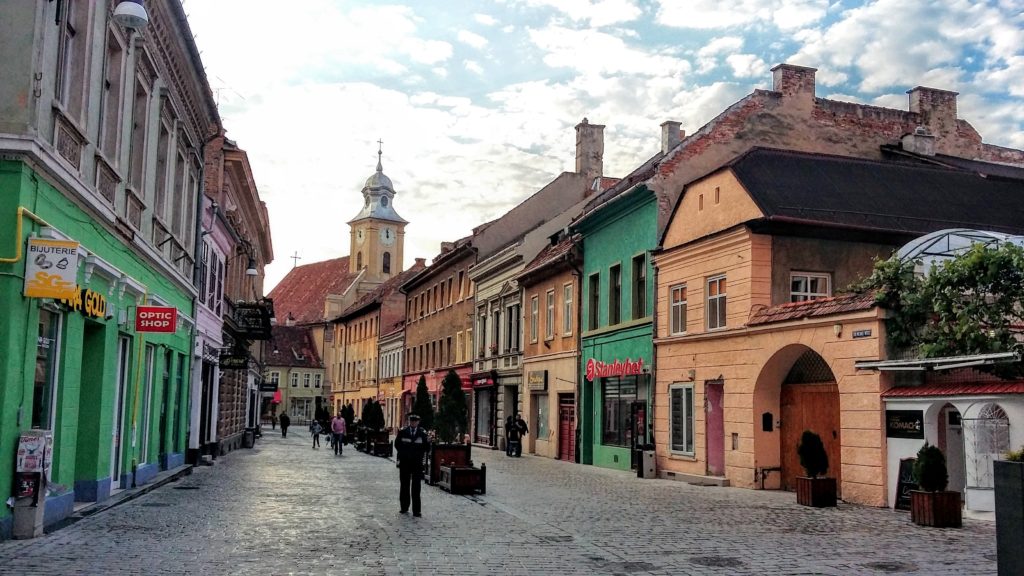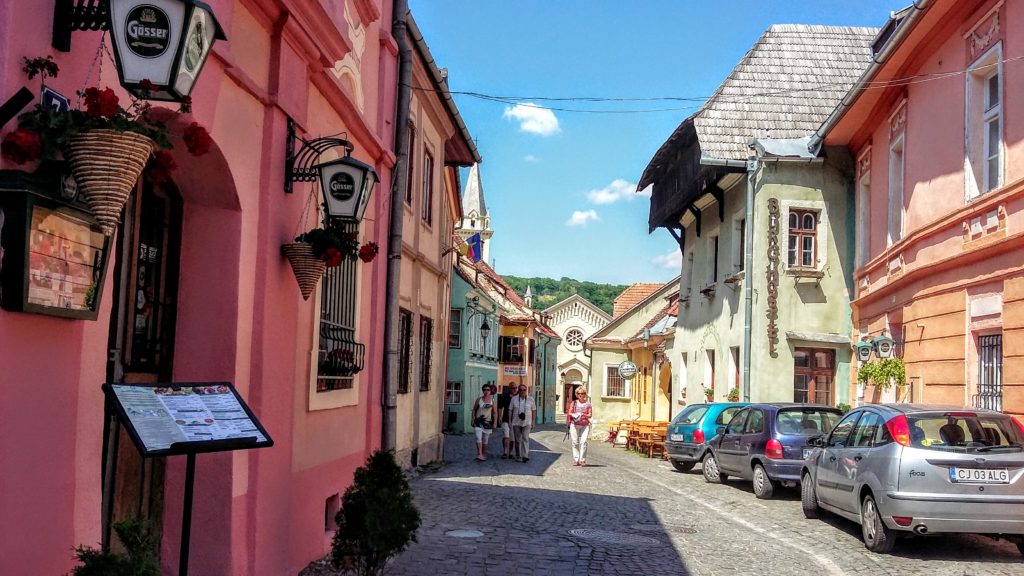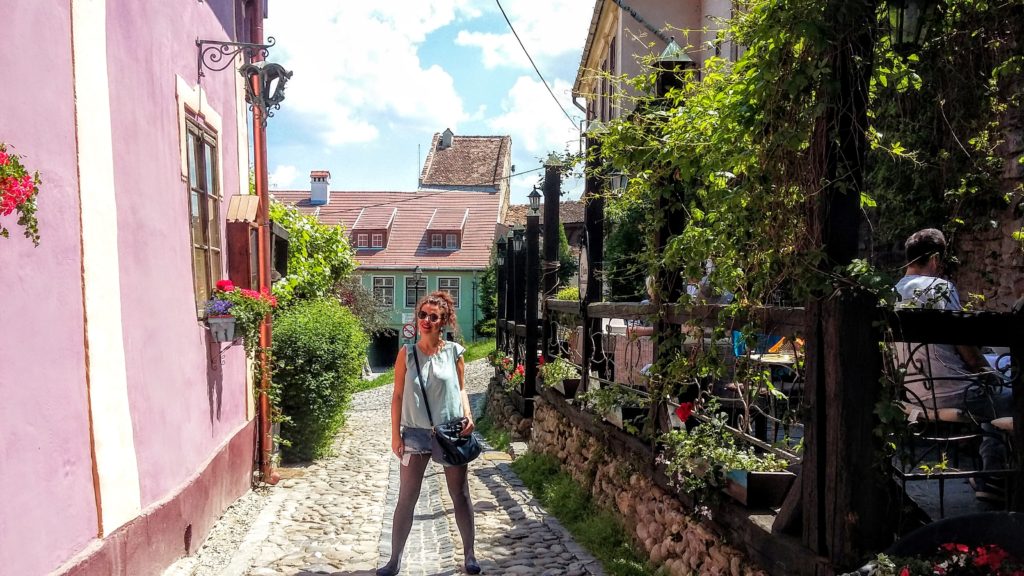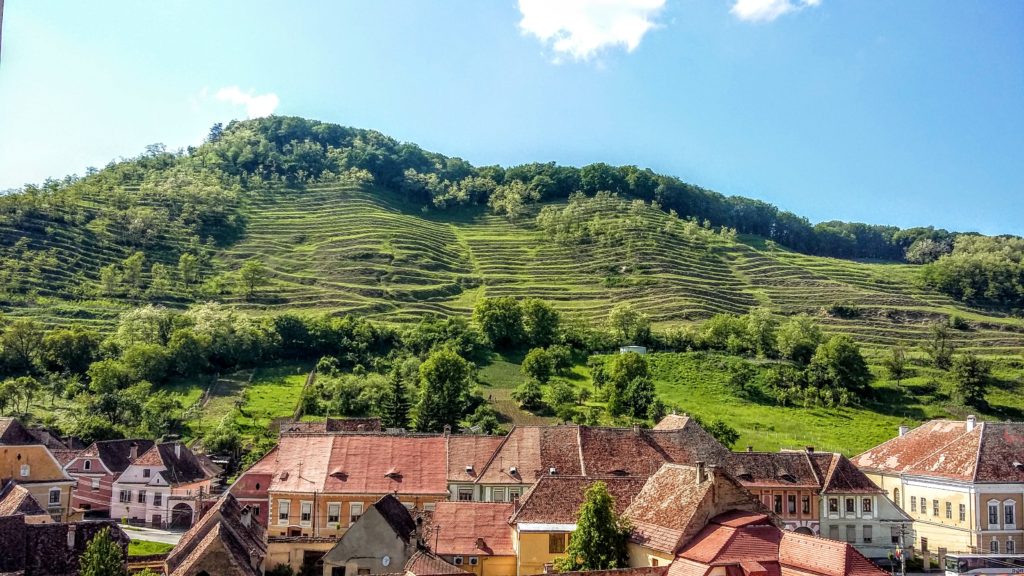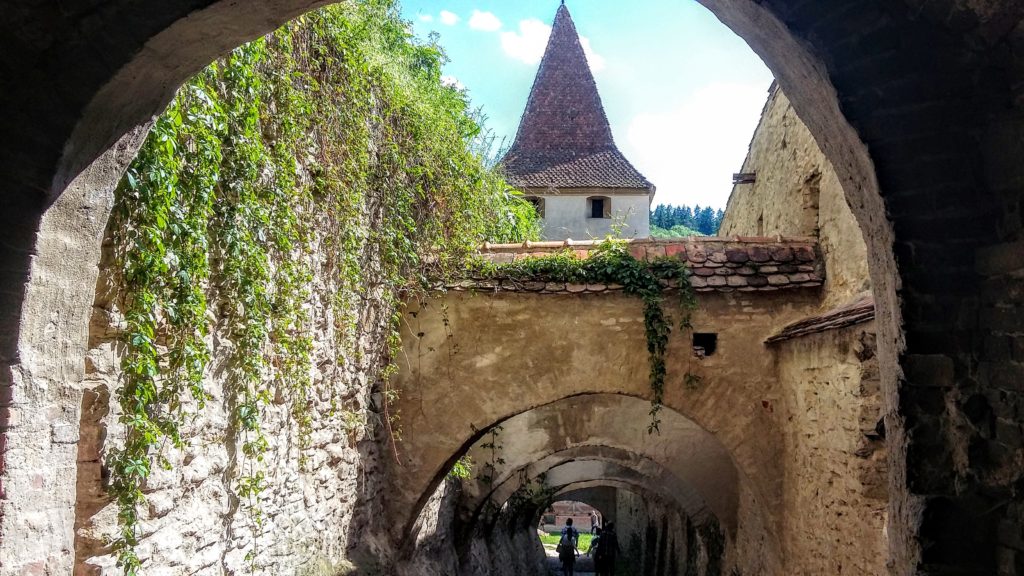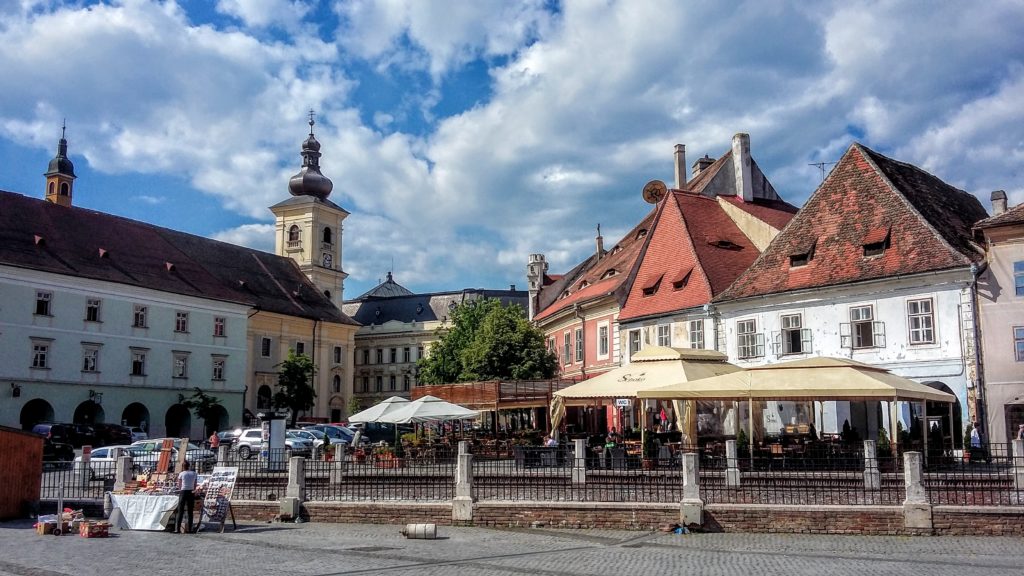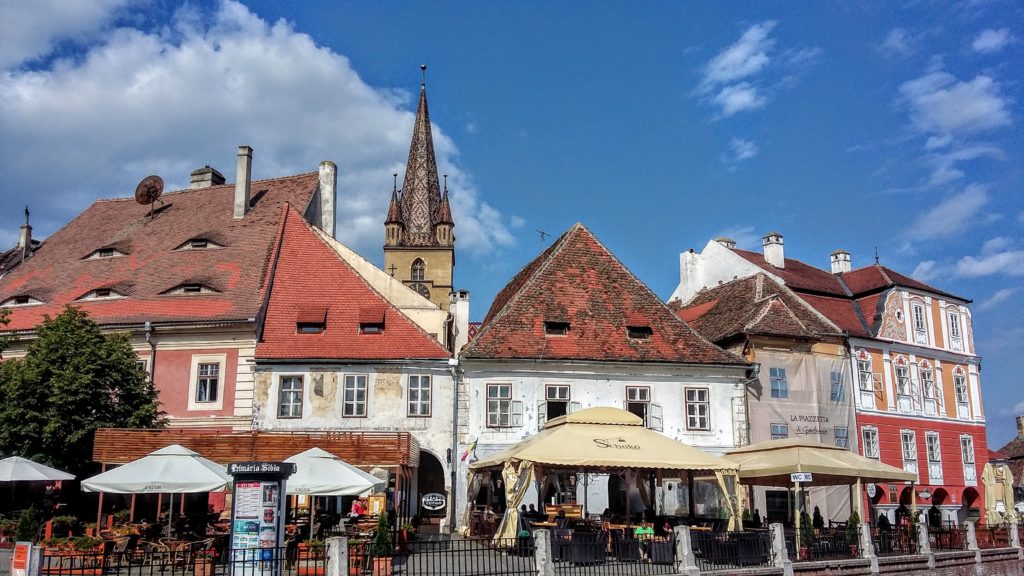Brasov, Sighisoara and Sibiu, Romania – what to visit
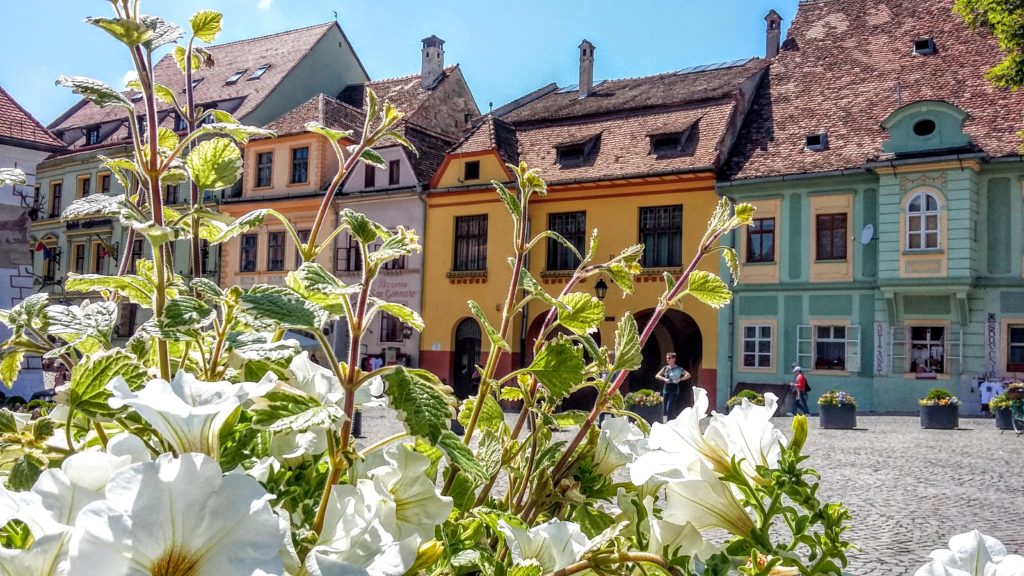
Hey hey! The Romanian adventure continues! In this post I will tell you more about the rest of the cities that we visited during our trip in Romania – Brasov, Sighisoara and Sibiu and what to visit there . If you have missed the first edition, you can find it here.
But let me start with our next stop – Brasov.
BRASOV
Our Transylvanian adventure continues to Brasov. This is the 7th biggest Romanian city located in the central part of the country. There are some famous ski resorts close to the city. The first thing you can spot when you arrive is the big Brasov sign on the top of the closest hill which similar to the Hollywood sign. The city itself is really colorful and charming. We had few hours to explore it.
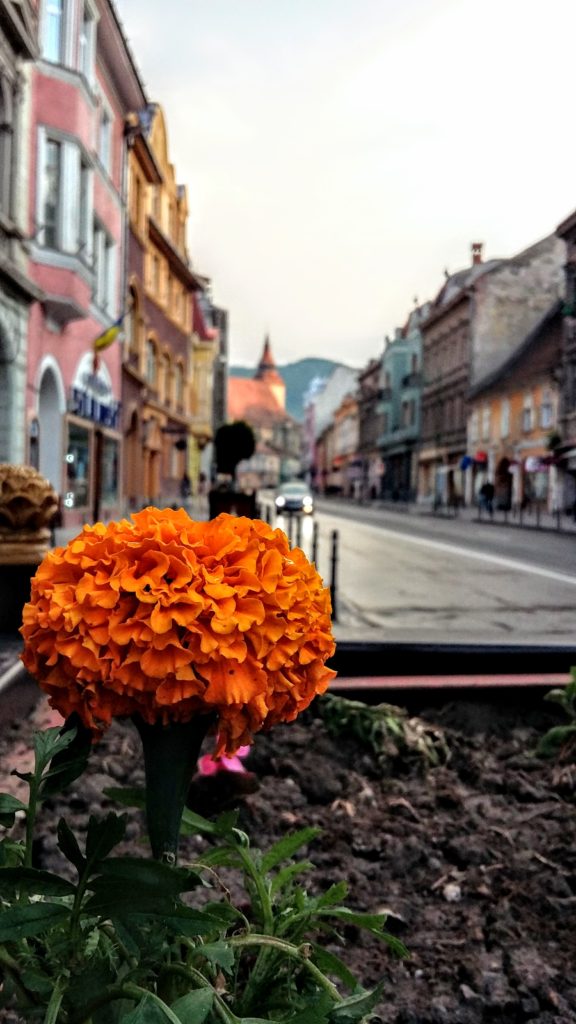
Here are the interesting things to be seen in Brasov (at least those that we had the time to visit):
- Council Square

The Council Square or Piața Sfatului is located in the historic centre of Brașov. It has been the place for weekly and annual markets since 14th century, being visited by merchants from the country and abroad. A pillory, in the middle of the square, was used as a means for public humiliation and punishment. Witches were also burnt here.The most important building in the square is the former Council House (Casa Sfatului). This now houses the Brașov County Museum of History. Around the main square is the picturesque pedestrian-only Republicii street, the Black Church, former Council House, indoor and outdoor terraces and restaurants, the Orthodox Church,etc.
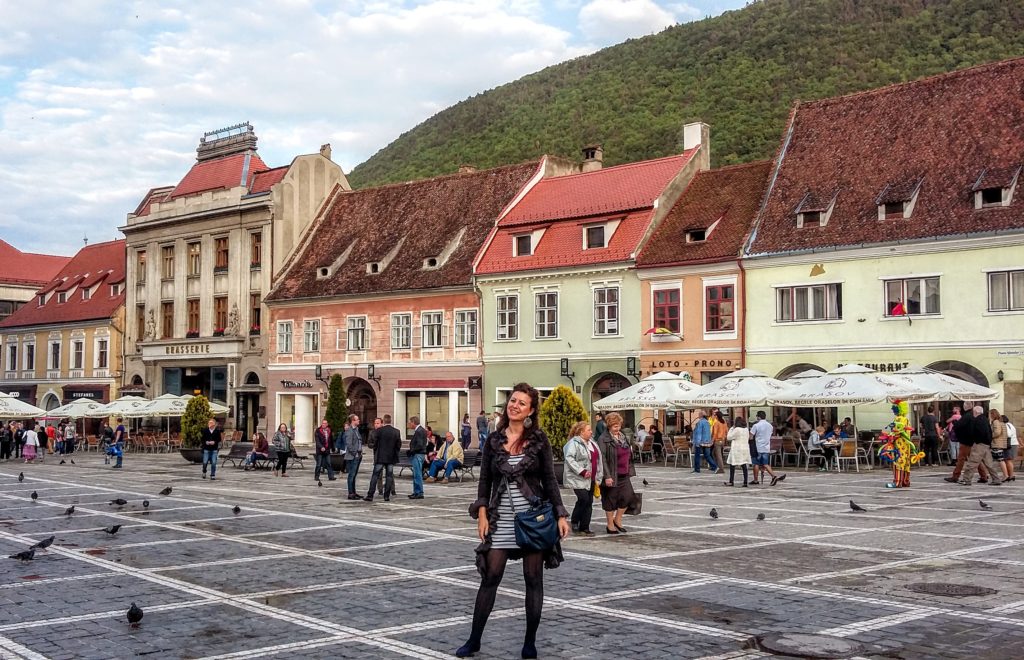
- Yekaterina’s Gate
It is the only original city gate to have survived from medieval times. The gates were 4 in total, but this was the only one used by Şcheii Braşovului – a small neighborhood populated by ethnic group of Bulgarian and Romanian village people. They were allowed to enter the city and sell their products only through this gate and after paying a toll fee.
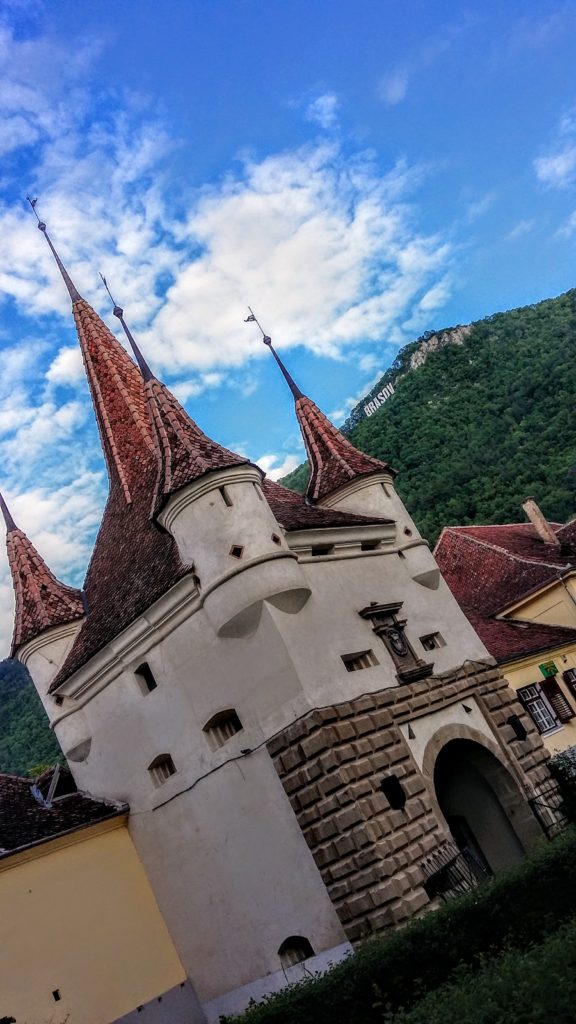
- Brasov historical center
Brasov is a city surrounded by mountains which makes it really picturesque. As it is the historical city center. Colorful old buildings, historical monuments, beautiful churches, small restaurants and shops, truly truly magical.
- The city hall
Built in the 13th century, the house served as meeting place for the town councilors, known as centurions. On top of the building sits the Trumpeter’s Tower, used during the Middle Ages as a watchtower for warning the citadel inhabitants of approaching danger. Today, the old city hall houses the Brasov History Museum.

- Black Church (Biserica Neagra)
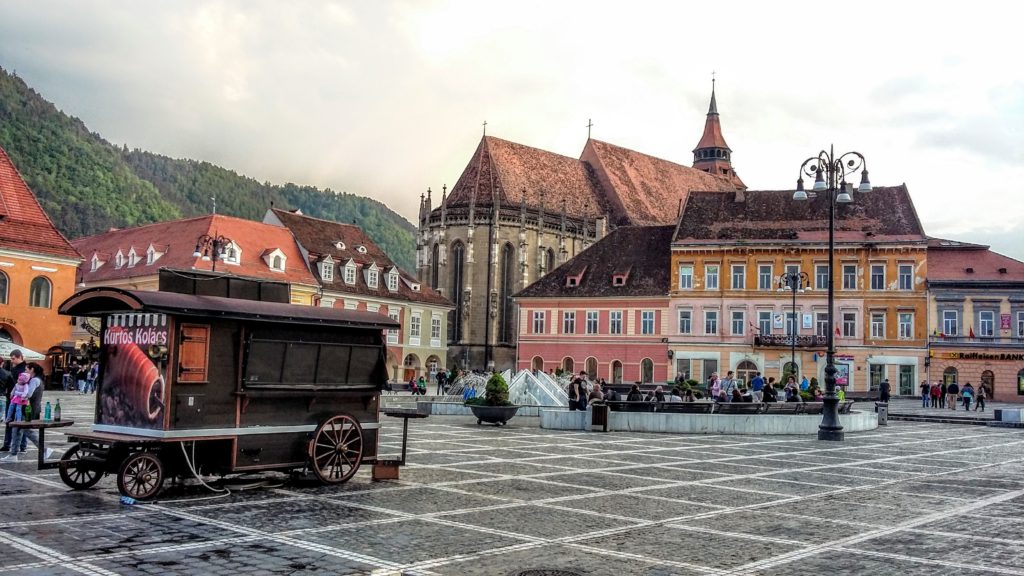
It stands in the Council square. The church was given its new name after disaster struck again in 1689, when the Great Fire leveled most of the town, blackening the walls of the church. Restoration took almost 100 years. Of two towers planned, only one was finished. The interior is beautiful, with balconies, stained glass windows, an enormous organ, stone columns and walls adorned with fabulous Turkish carpets. During the summer there are organ concerts three times per week.
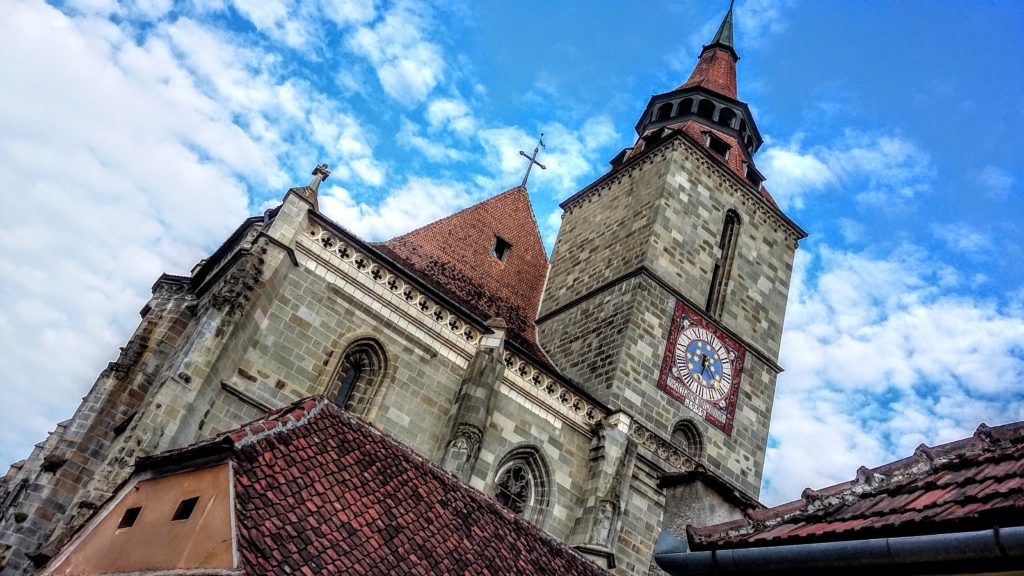
There are few more really unique must visit places for which we didn’t have time as it was heavily raining for couple of hours. Click on the link to read more about the rest of the amazing places that you could visit in the town of Brasov, some of which are:
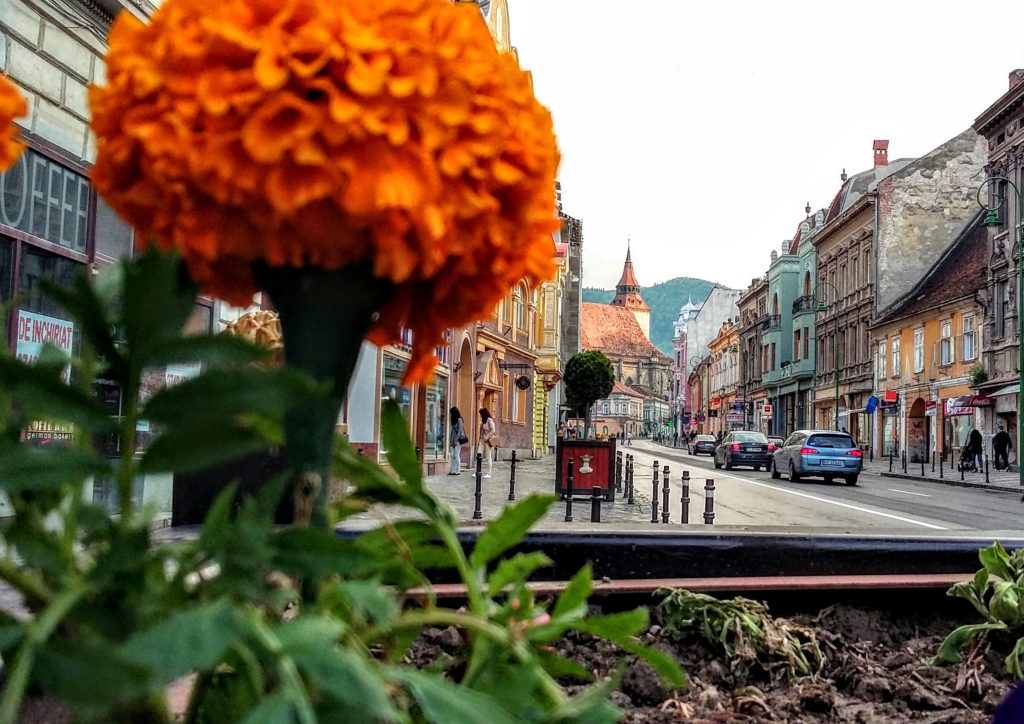
- The Weavers’ Bastion
- Brasov Fortess
- Sf. Nicolae Church (Saint Nicholas)
- Turnul Alb
- Citadel of The Guard
- Bastionul Graft
SIGHISOARA
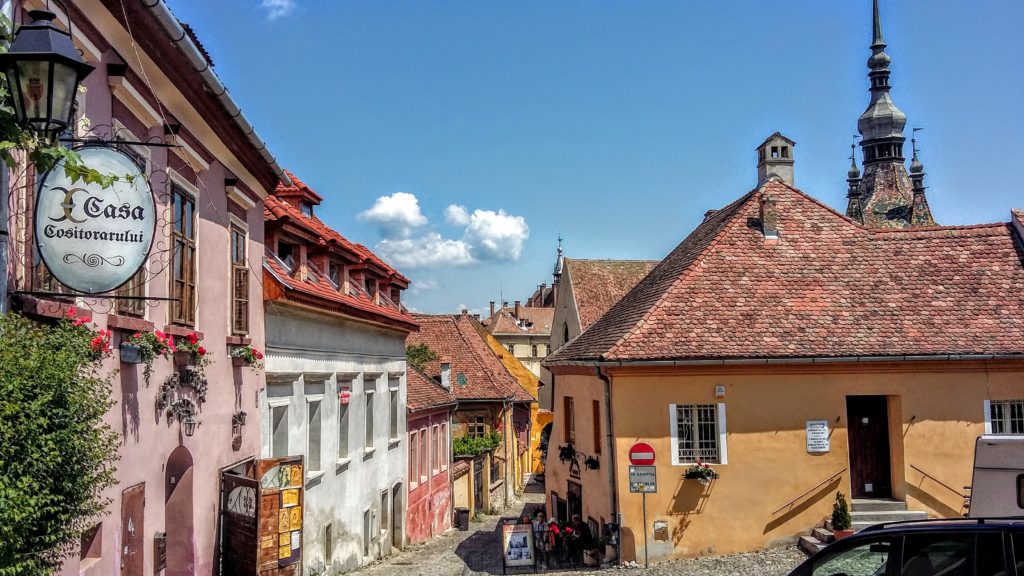
It is a small colorful city in the heart of Romania. It is by far my favorite town in our northern neighbor. Sighisoara is so tiny but yet so unique and picturesque. This medieval city is so well preserved that you can really feel this ancient spirit wandering around its narrow cobbled streets. It is known as the birth place of Vlad Dracula. Sighisoara is one of the seven Saxon walled citadels in Transylvania and maybe the most famous one. You can see many secluded squares, fascinating towers, steep stairways, cobbled alleys, decorated churches and stunning colorful houses. It is a medieval fairytale town.
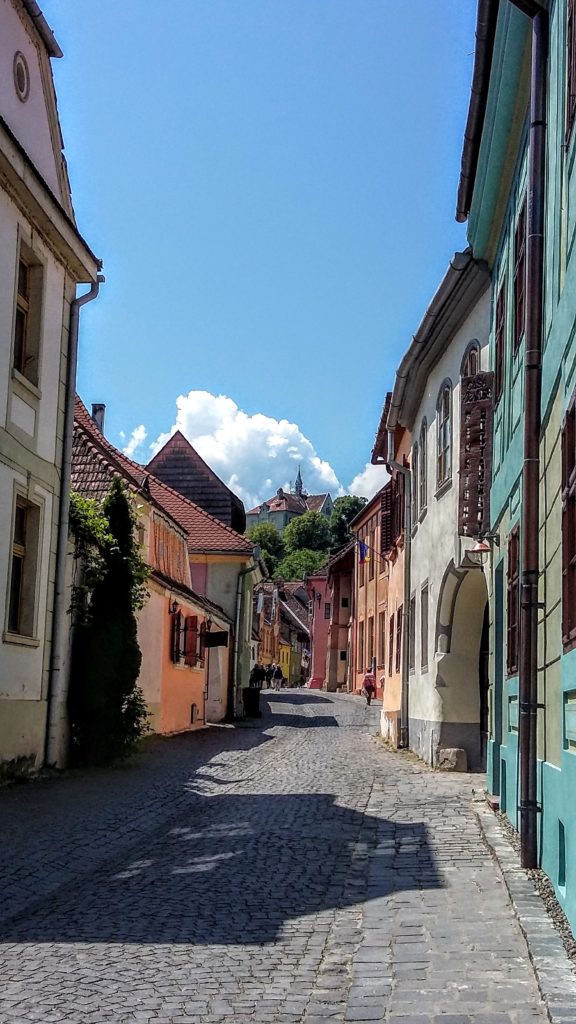
We spent just few hours there but we managed to see the most important things that this beautiful place could offer, such as:
- Sighisoara Citadel (Cetatea Sighisoarei)
As known as the old town of Sighisoara is the only inhabited medieval citadel. It was built in the 12th century and nowadays is an UNESCO heritage. To protect the city from invaders the Saxons built 14 towers and 5 bastions. In the present times only 9 of the towers and 2 bastions survived. I really fell in love with Old town, every corner of this neighborhood is so special and so unbelievable, I cannot put my impressions into words. You must see it!
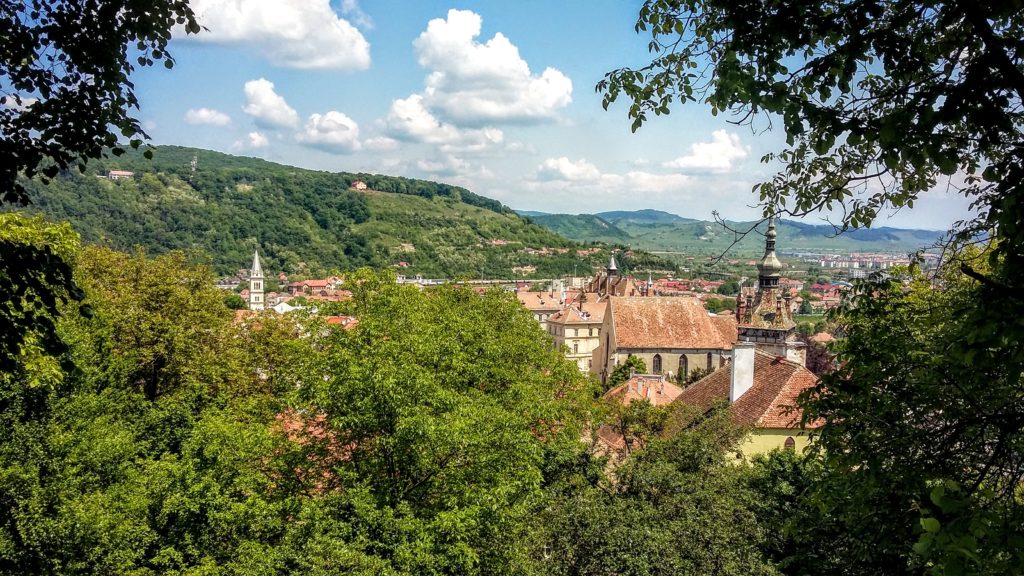
- Clock tower (Turnul cu ceas)

The highest and the most famous of the 14th Citadel towers. All the ornaments have really interesting meaning and purpose, and were added at different point in time. For instance, there are two angels representing Day and Night. At 6 am, the angel symbolizing the day appears, marking the beginning of the working day and at 6 pm, the angel symbolizing the night comes out carrying two burning candles, marking the end of the working day. The clock tower is open for public and you can climb to the top. It works 6 days a week, except Monday. Make sure to check the open hours before you go because depending on the day of the week and the season they vary.
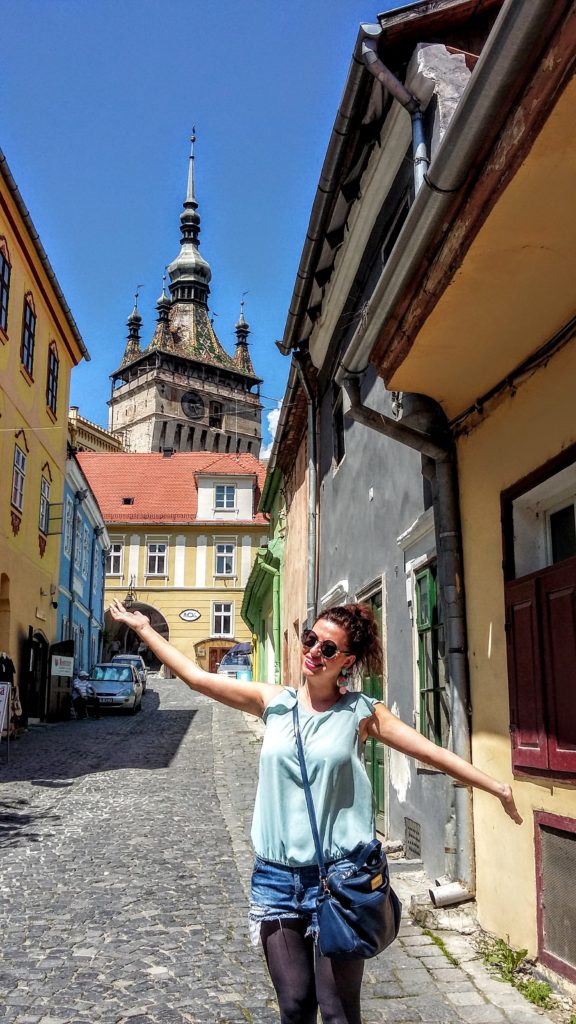
- The citadel square (Piata cetatei)
This quaint small square lies at the heart of the citadel. In the old days, street markets, craft fairs, public executions and witch trials were held here. From this square, you can easily access the main attractions of Sighisoara.
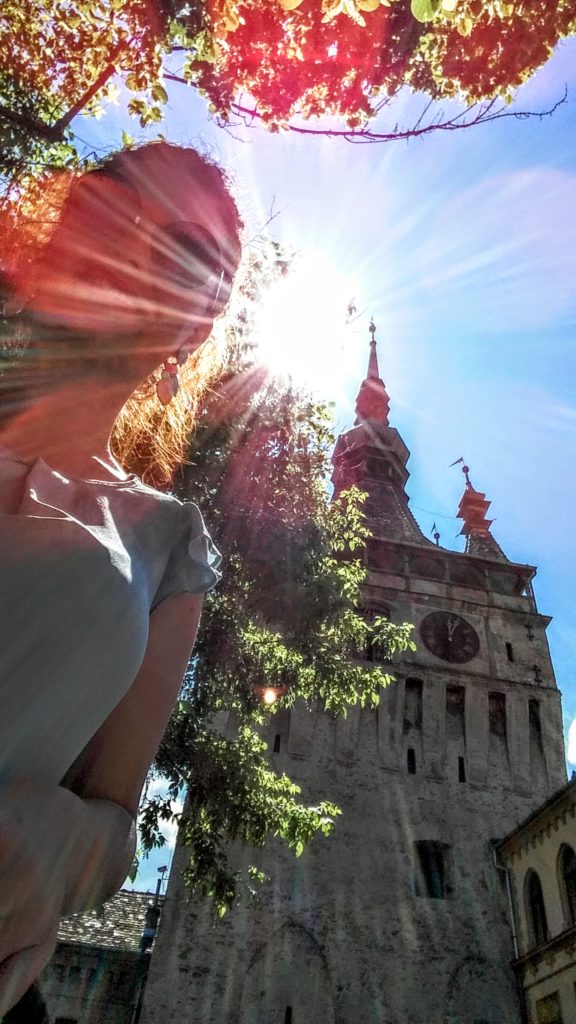
- The Citadel towers
In the past the number was 14, but today there are only 9 of them which survived the test of the time. Laid out on two to four levels, the towers stored ammunition and food supplies and were provided with firing windows for cannons, shells and arrows. Their names are as it follows: Blacksmiths’ Tower(Turnul Fierarilor), Butchers’ Tower(Turnul Macelarilor),Cobblers’ Tower(Turnul Cizmarilor),Furriers’ Tower(Turnul Cojocarilor), Ropemakers’ Tower(Turnul Franghierilor), Tailors’ Tower (Turnul Croitorilor), Tanners’ Tower(Turnul Tabacarilor) and Tinsmiths’ Tower(Turnul Cositorilor).And last but not least – the Clock Tower itself.
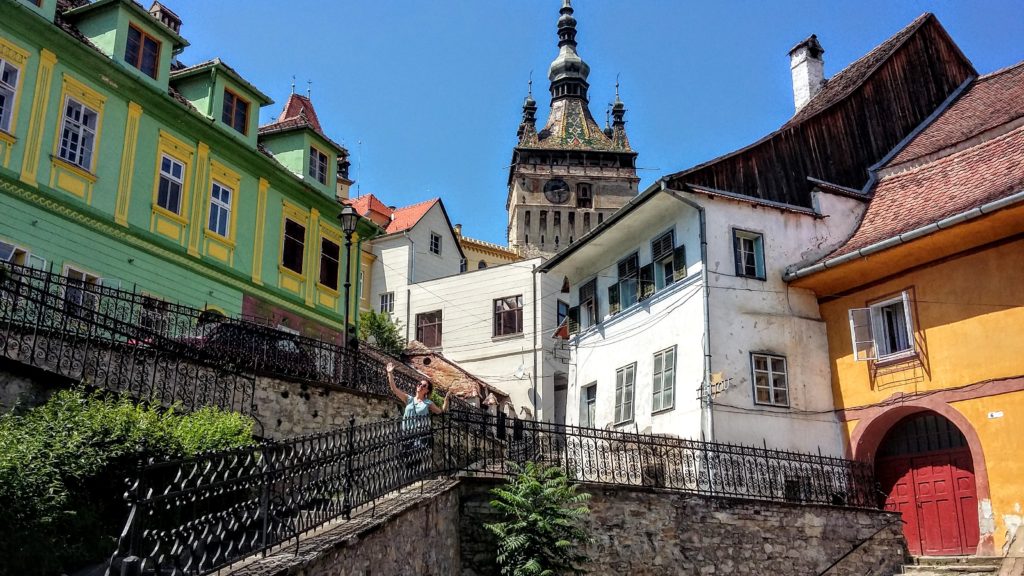
Interesting fact about Ropemakers’ tower is that it is located on the top of the hill, right next to the Church on the hill and the Saxon cemetery. Today it is restored and turned into a home for the cemetery caretaker. It is quite creepy, indeed!

- The church of the Dominican Monastery
It is a Gothic church located close to the Clock tower. The monastery complex was demolished in the end of 19th century and the church is the only one that remained intact.
- The church on the hill
This church has this name because it is located on the School hill (1373m). In order to get there you have to climb the Scholars’ stairs and pass by the local school. The school is still functioning and in order to get there you have to do this climbing exercise every single day. They know how to keep Romanian kids in a shape! 😀 The church is open every day from 10am to 6pm and there is a fee if you want to enter (it was something symbolic, like 1 or 2 euros)
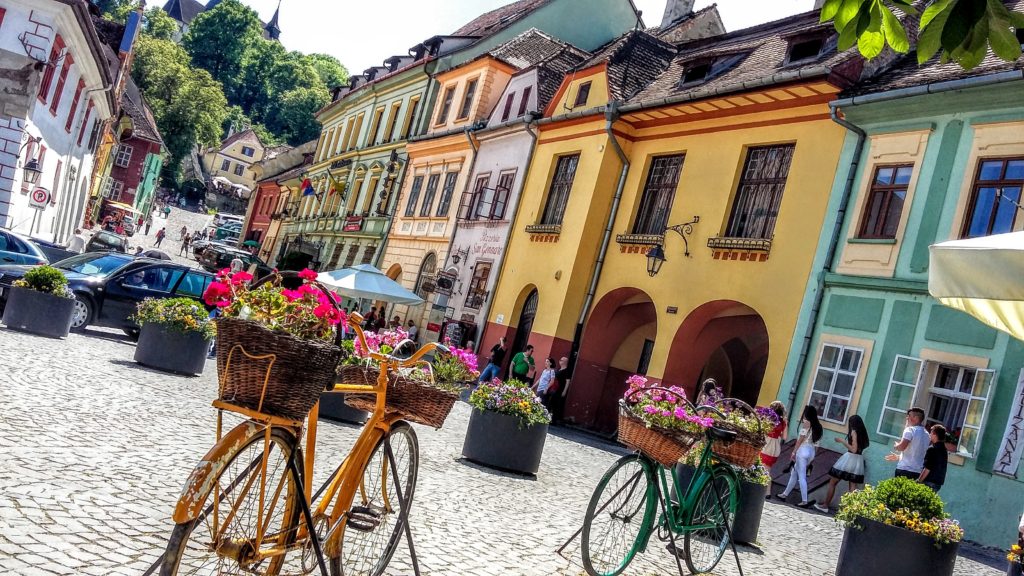
- Saxon cemetery
The Saxon Cemetery in Sighișoara occupies the entire west slope of the hill where the medieval citadel stands. Construction of the church on the hill started in 1345 and in 1350, the first defensive wall was built around the town. Initially, the dead were buried around the church, but as the need for space grew, the plot just outside the upper gate of the fortification was turned into a cemetery that exists to this day. The cemetery is open every day from 8am till 8pm.
- The Scholars’ Stairs
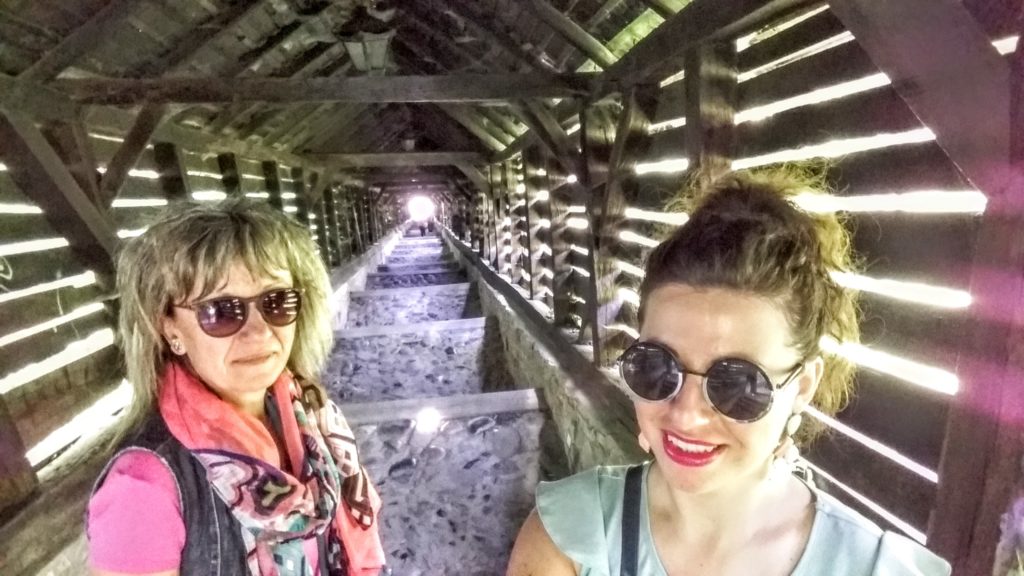
Located at the end of School Street and connecting the Citadel Square with
the Church on the Hill, the Scholars’ Stairs, or Schoolboys’ Stairs, as it was also known, makes for an interesting piece of medieval architecture.Built in 1642, the covered stair-passage was meant to facilitate and protect schoolchildren and churchgoers on their climb to the school and church during wintertime. Originally, the stairs had 300 steps, but after 1849, their number was reduced to 175.
- Vlad Dracul’s House
The Vlad Dracul House is located in the Citadel Square, close to the Clock Tower. This is the place where Count Dracula was born and lived for several years with his father. A wrought-iron dragon hangs above the entrance. The ground floor of the house serves as a restaurant, while the first floor is home to the Museum of Weapons. We had lunch at the restaurant and to be honest I was not really impressed. I knew that it is probably the next tourist trap, but we were quite tired and we didn’t want to keep wandering around before eating something. The place is a bit expensive in terms of quality/price. But anyway, it was still delicious.
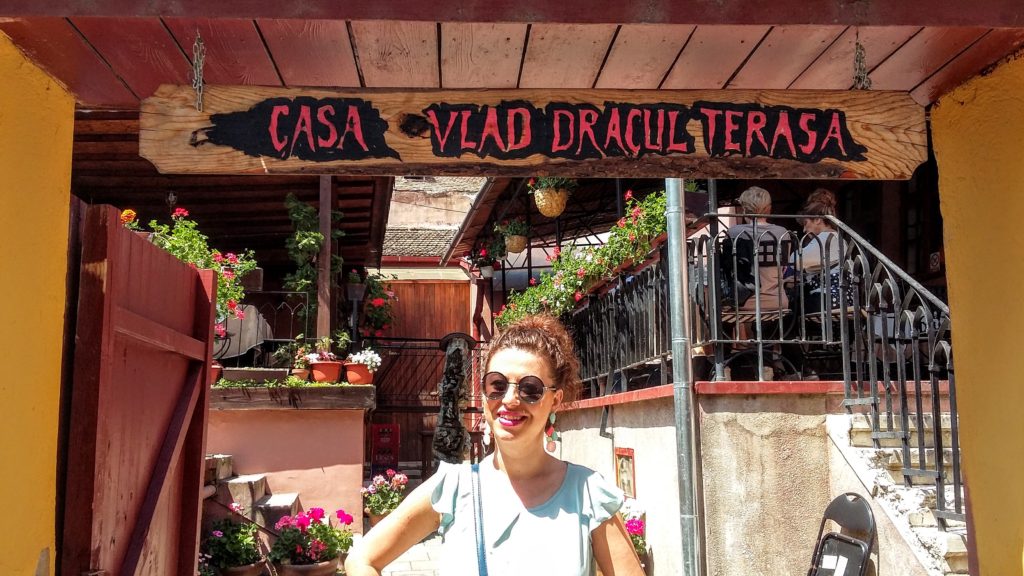
- The Stag house (casa cu Cerb)
This building is also known as the deer house. The house draws its name from the stag skull set on one of the corners of its façade. Nowadays it is a hotel. It is located on a beautiful square, surrounded by colorful houses and a lot of flowers.
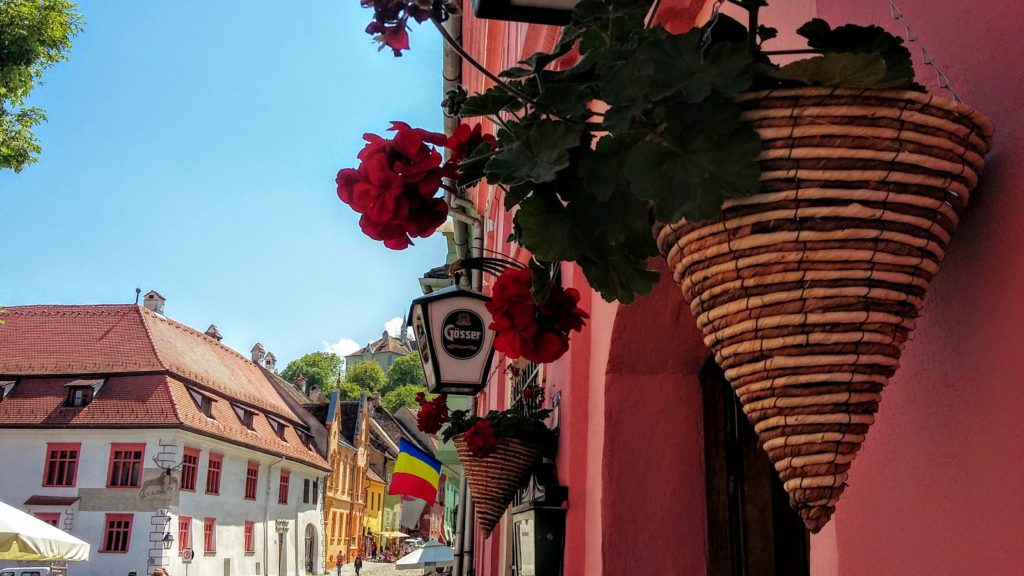
If you plan a trip around Romania, don’t even hesitate to include Sighisoara in your plans, you will not regret it even for a second! There are more things to be seen there but our tight schedule didn’t allow us to spend more time in this amazing city.

Before reaching our last stop – Sibiu, we made a quick stop at the tiny little city called Biertan. It is also a really popular day trip in case you stay for a longer period in Sighisoara. Why we stopped there?
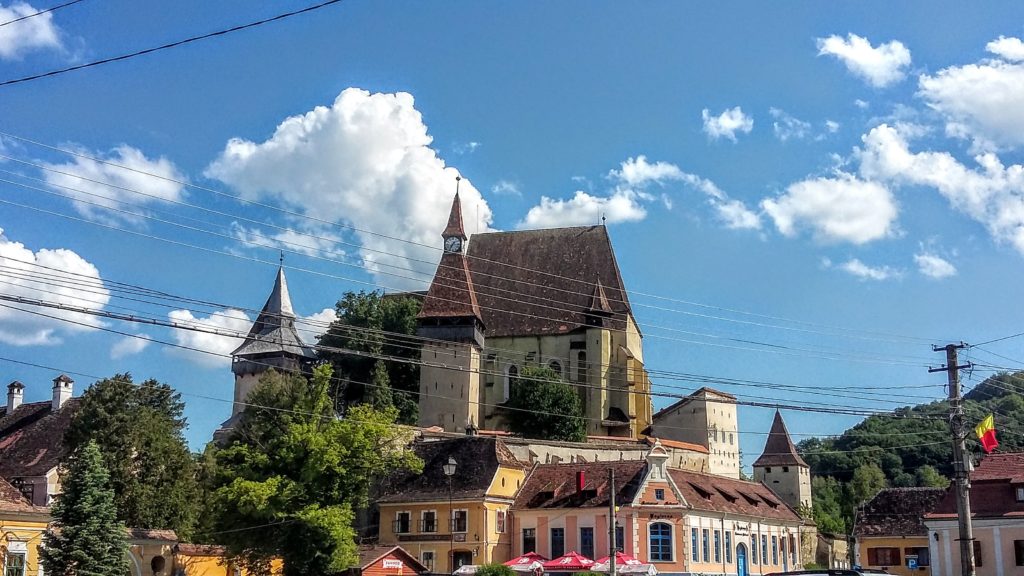
Well, in the small town of Biertan you can find the Biertan fortified church. During the Ottoman invasion the Transylvanian Saxons choose to fortify the churches instead of building fortresses. The church has three rows of exterior fortifications linked by gate towers, nine in total. And the place is absolutely stunning, but the most interesting thing about it is the “matrimonial prison” in its grounds. What is that, you would ask? Well, this is a place where couples wishing to divorce were confined so they could be sure they wished to end their marriage. The lockup lasted for two weeks, although the pair could leave early if they reconciled. They had to share a single bed, plate and spoon. During the three centuries that bishops resided at Biertan, just one couple ended up divorcing. Fascinating, isn’t it???
SIBIU
This city competes with Sighisoara for the 1st place as my favorite Romanian town. Being our last stop we didn’t have enough time to see everything, but it is definitely a place worth visiting. It is located in central Romania and as most of the medieval towns has two parts – new and old town.
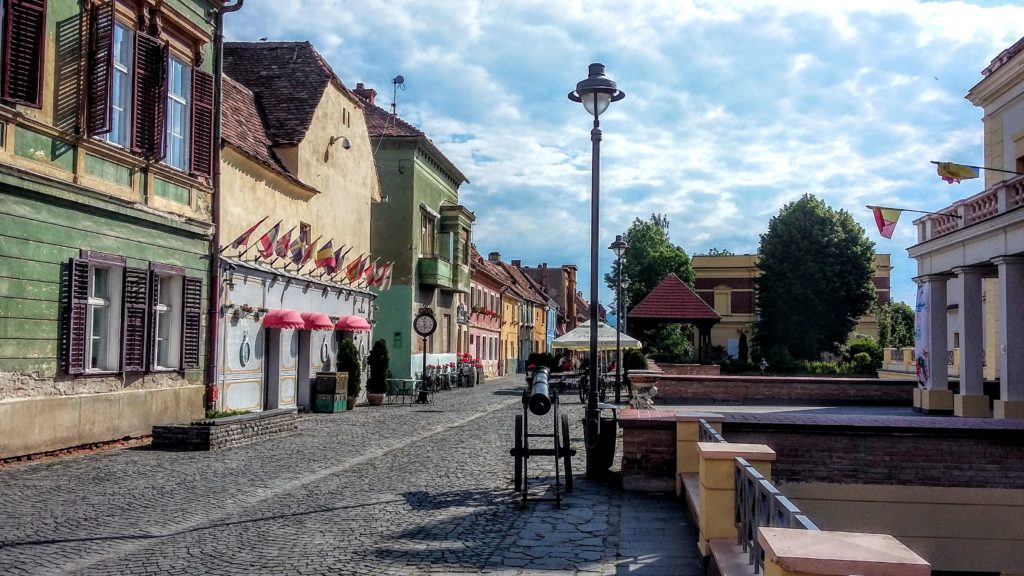
Here are some of the places we managed to visit during our stay in Sibiu:
- Sibiu’s towers

Sibiu was one of the strongest fortified cities in Europe. The original fortifications consisted of 39 towers and four gates. Nowadays the most preserved is the southeastern side as the city was mainly attacked from this side and it was reinforced many times. There are four towers that survived till today – : Harquebusiers’ Tower (Turnul Archebuzierilor), Carpenters’ Tower(Turnul Dulgherilor) and Potters’ Tower (Turnul Olarilor) and the Great Tower (Turnul Gros).
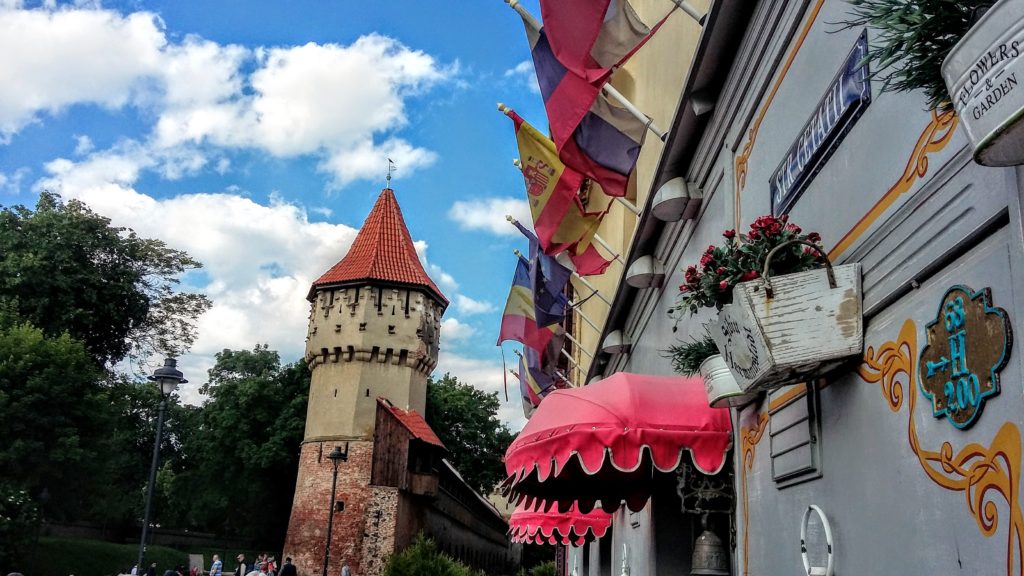
- The Great square
The city is divided in two – upper and lower town. The great square is located in the Upper town which was the wealthier part of the town. The Great square is one of the three most emblematic squares in the area together with Huet square and the Little square. In the past it was used for merchant activities and public executions. Today several of the most important buildings are located there – the Roman-Catholic Church, the Council tower, the Brukenthal Palace, etc. It is the largest square in town and one of the most picturesque.
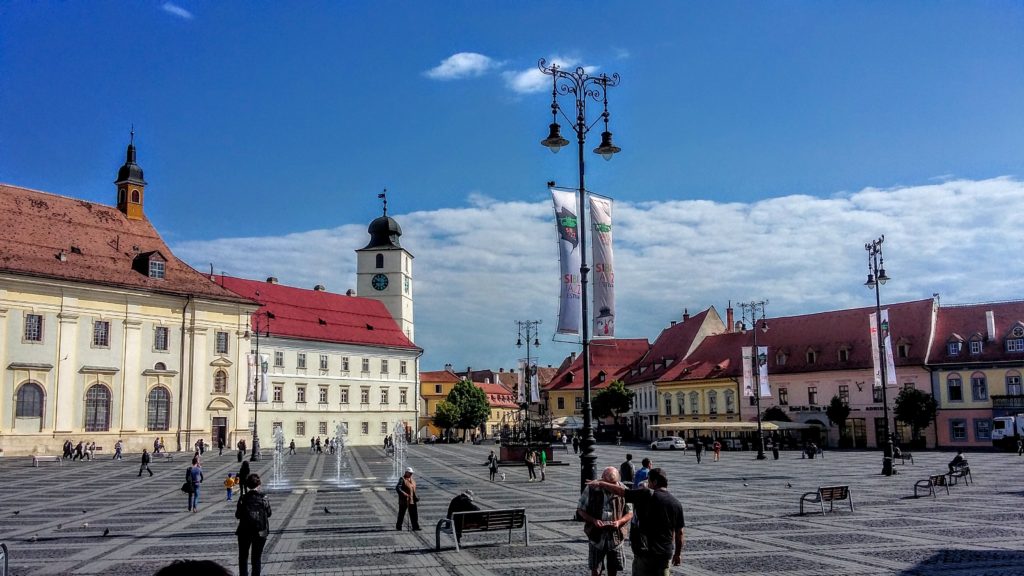
- Council tower
Throughout the centuries Turnul Sfatului (in Romanian) served as a grain storehouse, a fire watchtower, a temporary prison and even as a museum of botany. You can climb the tower and admire a stunning view from the top.

- Brukenthal palace
The palace has beautiful architecture and nowadays houses a museum – the oldest art museum in the country.

- The Little square
From the Great Square, walk through one of two tunnels under the arches of the Council Tower to arrive at the Little Square. This second fortified square was home to the town’s most prestigious master craftsmen, who lived in rows of arcaded houses along the north and east sides. Today, small shops, cafes and businesses line the square.
- The bridge of lies
Legend has it the Bridge of Lies has ears and knows when someone standing on it is being untruthful.

- The stairs passage
The 13th century Passage of Steps, an architectural masterpiece with twin staircases and archways, connects the Upper Town to the Lower Town. Built in the 13th century, it is one of the most picturesque places in Sibiu. One very beautiful gate is the Tower of the stairs. The tower presents itself in the form of a one-story massive brick construction, hosting at the first floor an arched passage way through which one can arrive at the stairs connecting the “Upper Town” with the “Lower Town”.
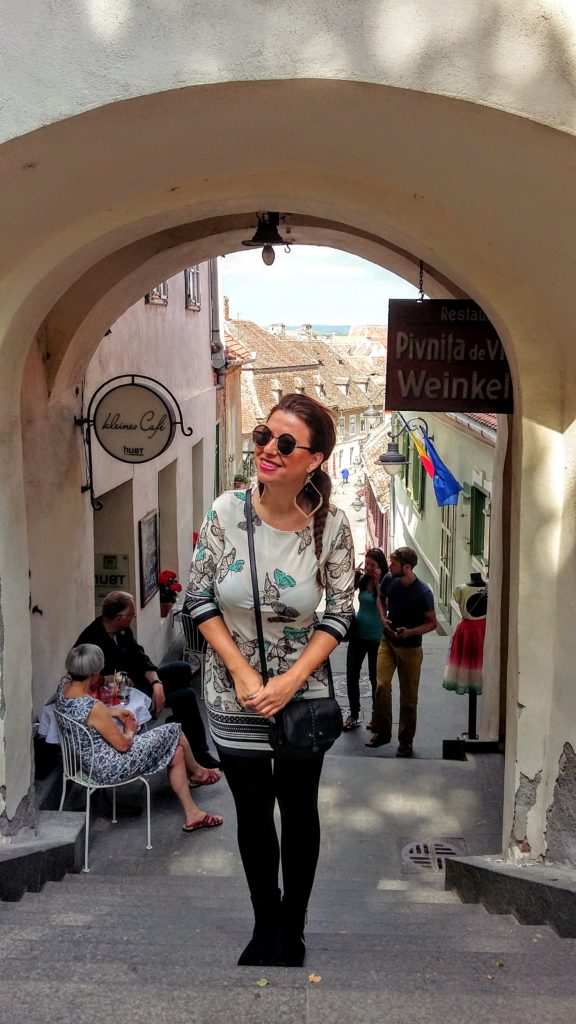
- Haller bastion
The bastion is built in brick and filled with earth. There is a red-brick tower standing till today.
- Orthodox metropolitan cathedral
The second largest Orthodox cathedral in Romania. It is not only amazing from the outside, but from the inside as well. Definitely worth visiting.

- Gothic Lutheran Cathedral
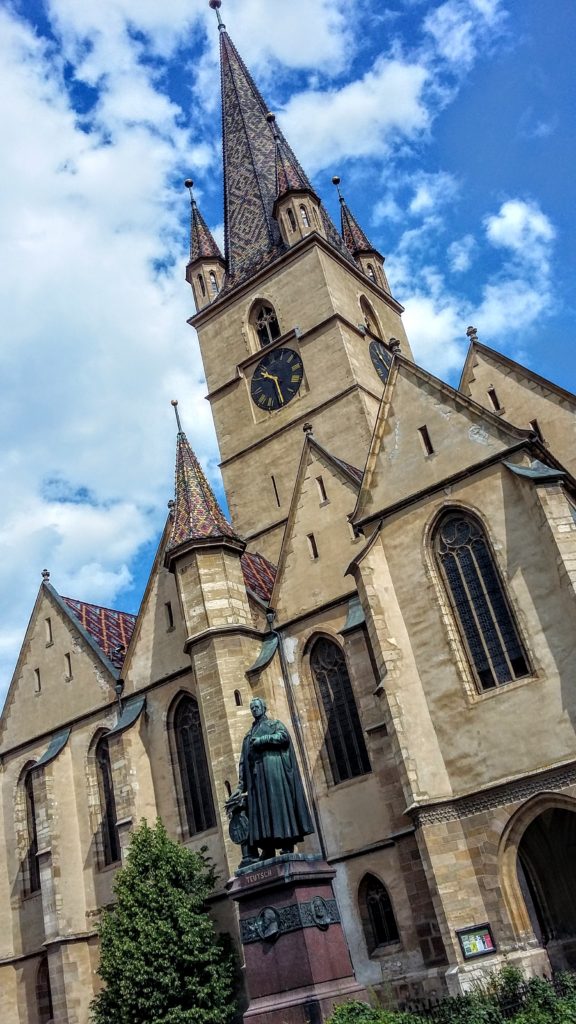
The cathedral is located on the third square of the Upper town – Huet square. You can pretty much see it from everywhere in town. The 4 turrets around the steeple were a sign to medieval visitors about the town’s right to sentence you to death should you step out of line. The cathedral also houses the largest organ in Romania with more than six thousand pipes installation.
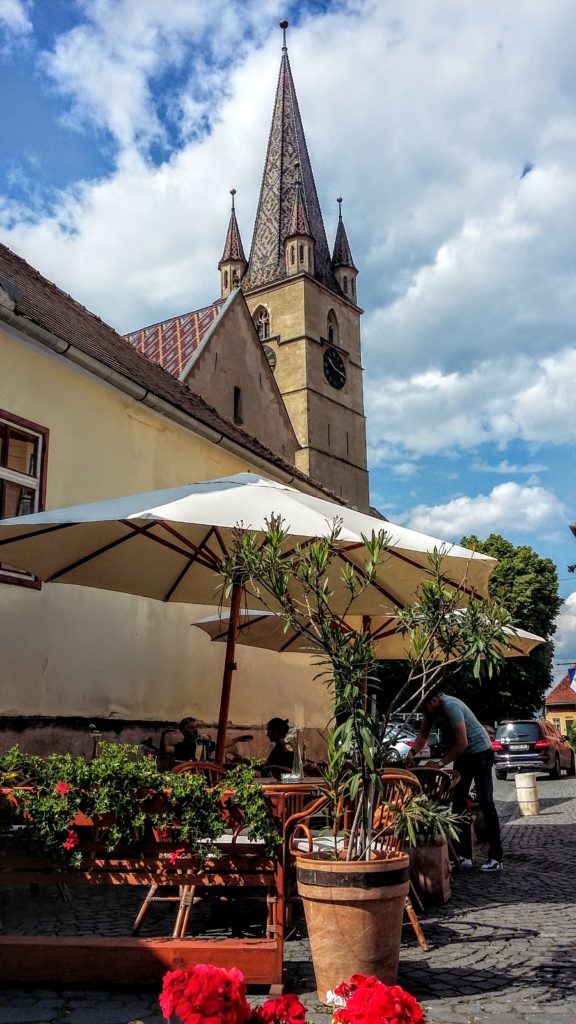
- Strada Nicolae Balcesco
This is the main pedestrian street leading away from Piata Mare (the Great square). The buildings are in pastel tones, colorful and richly ornamented. There are many shops, coffee places and restaurants alongside the street.
- Lower town
We spent most of our time in the Upper part of the city so I could say that unfortunately I didn’t have enough time to explore the Lower town. It comprises the area between the river and the hill, and it developed around the earliest fortifications. The streets are long and quite wide for medieval city standards, with small city squares at places. The architecture is rather rustic: typically two-storey houses with tall roofs and gates opening passages to inner courts.

Before leaving Sibiu there is one important thing to mention. Look at the roofs. Do you see similarities? Yes! The roofs have eyes! Structurally speaking, they’re ventilation windows to air out attic heat. However, throughout periods of political strife and oppression, locals believed they were being watched by the “eyes” to ensure they were not acting out or causing trouble. And believe me, it is true, you feel like you’ve been watched all the time!
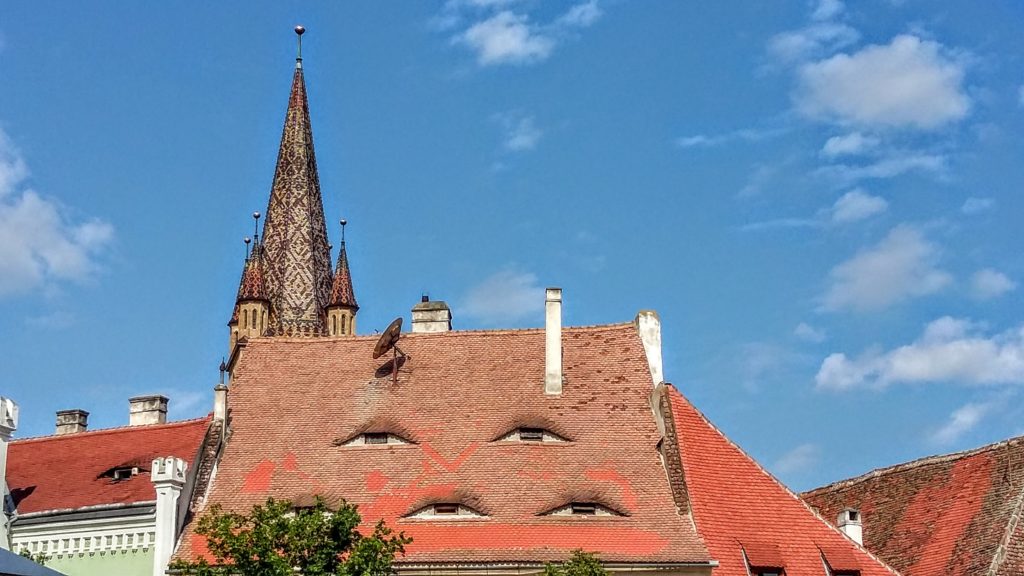
The last topic of this post will be focused on one of my favorite activities while traveling – tasting local food. In my case it was not new, as I told you before, we share similar dishes in the Balkans, but some things you must try:
- Covrigi or Romanian pretzel – amazing!

- Sarmale (cabbige rolls)
A balanced mixture of rice and minced meat (usually pork or pork combined with beef) and other vegetables and local herbs is rolled in cabbage leaves or young grape leaves for a delicate flavor. In Bulgaria we call it sarmi and it tastes absolutely the same.

- Ciorba de burta (tripe soup)
Love it or hate it. We have the same soup in Bulgaria and I personally don’t lile it, but it is a must try for sure. In my country we use it against hangover. 😀 There are many types of ciorba (the word has Turkish origins, means soup). You can order chicken, mushrooms, veggie, etc. In some places you can order the one that is served in a bread ball instead of soup bowl.
- Mici
Also known as mititei, they are the most popular Romanian grill dish. These caseless sausages are made of different combinations of ground meat, black pepper, and other spices, and they are grilled until they darken a little and become moist and soft.
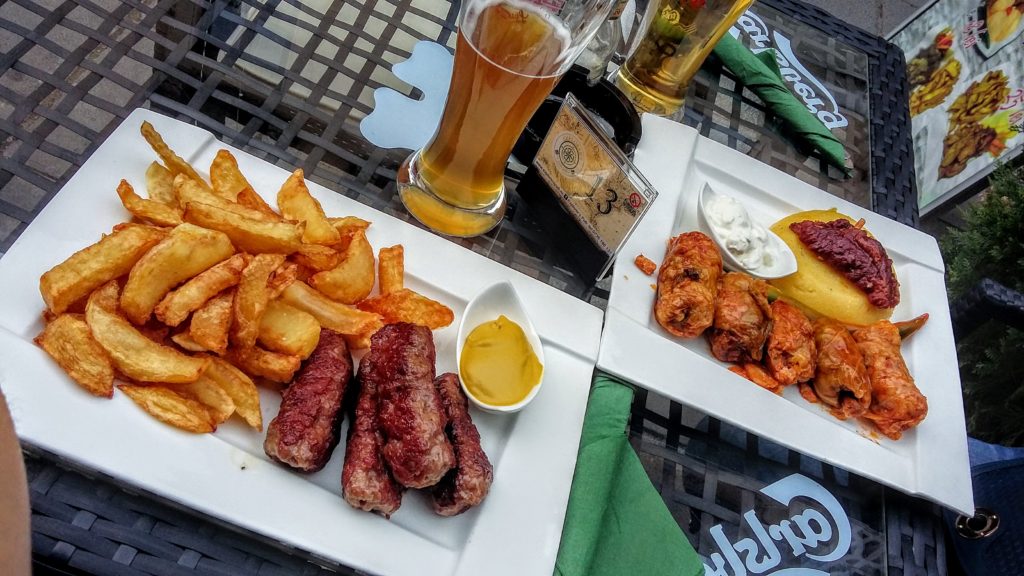
Those and many more make Romanian cuisine one of the tastiest in Europe.
Well, this is it. My Romanian adventure comes to an end. I really hope that this article awakened your interest in this beautiful region.
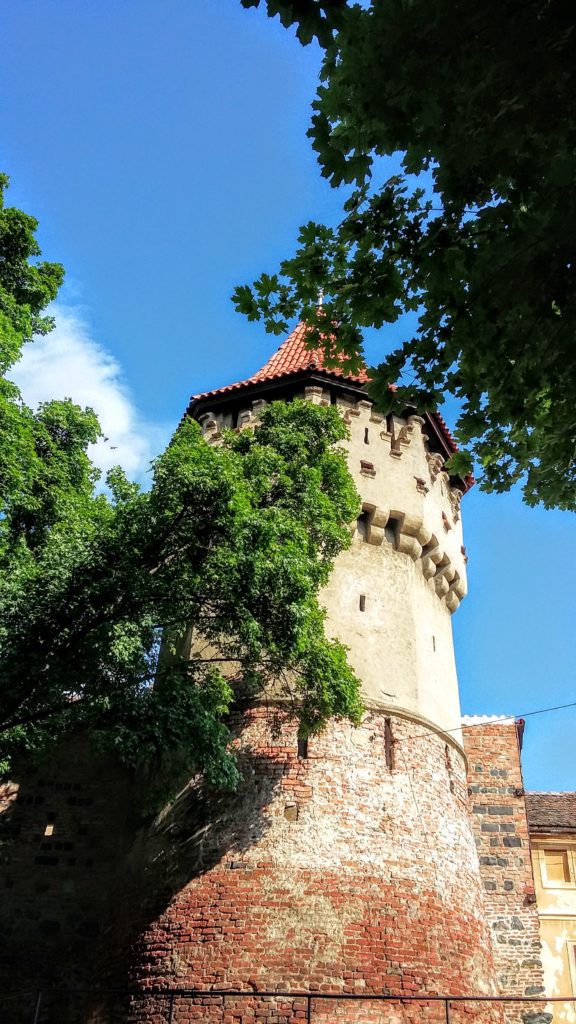
See you soon, when Travelista goes to…

